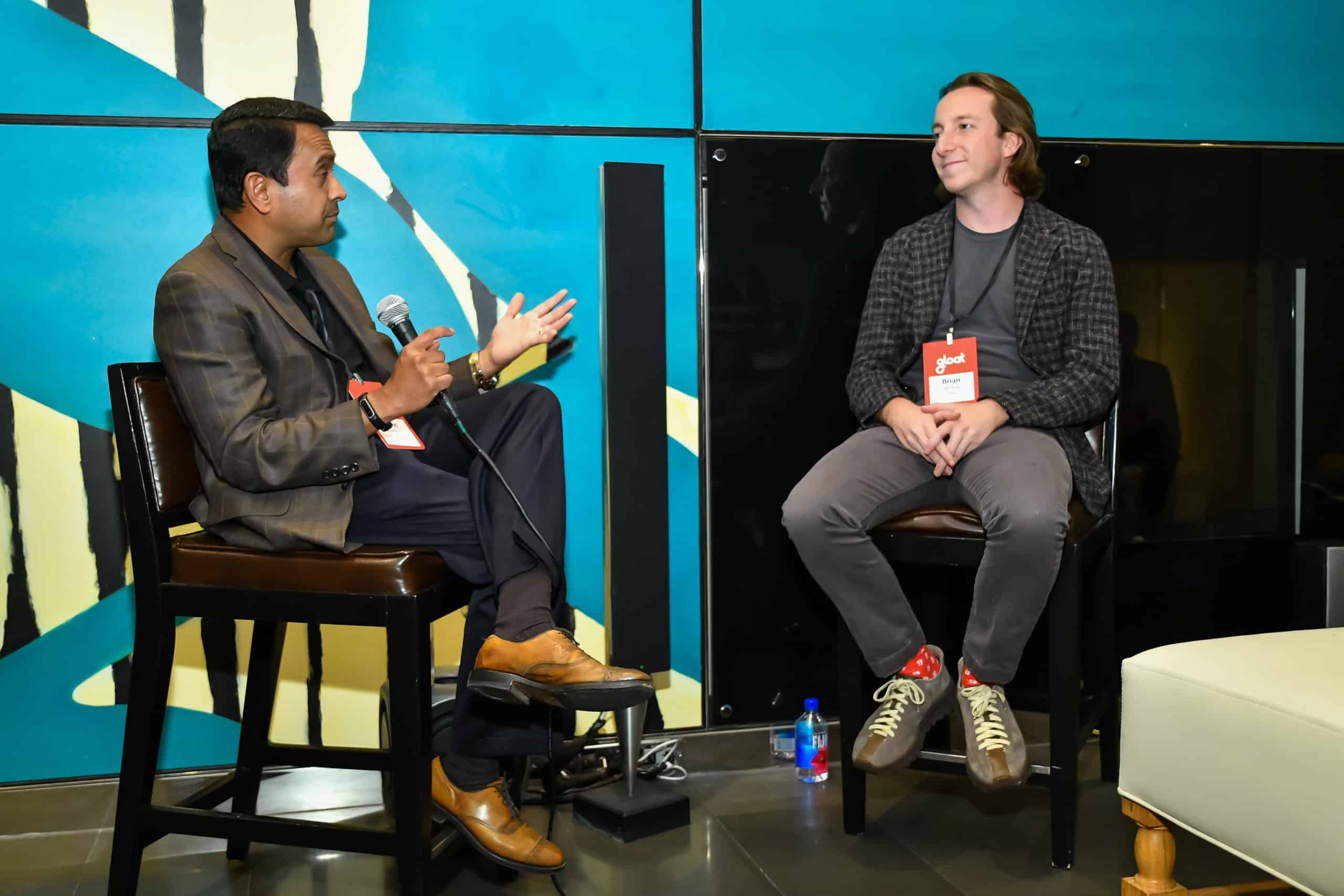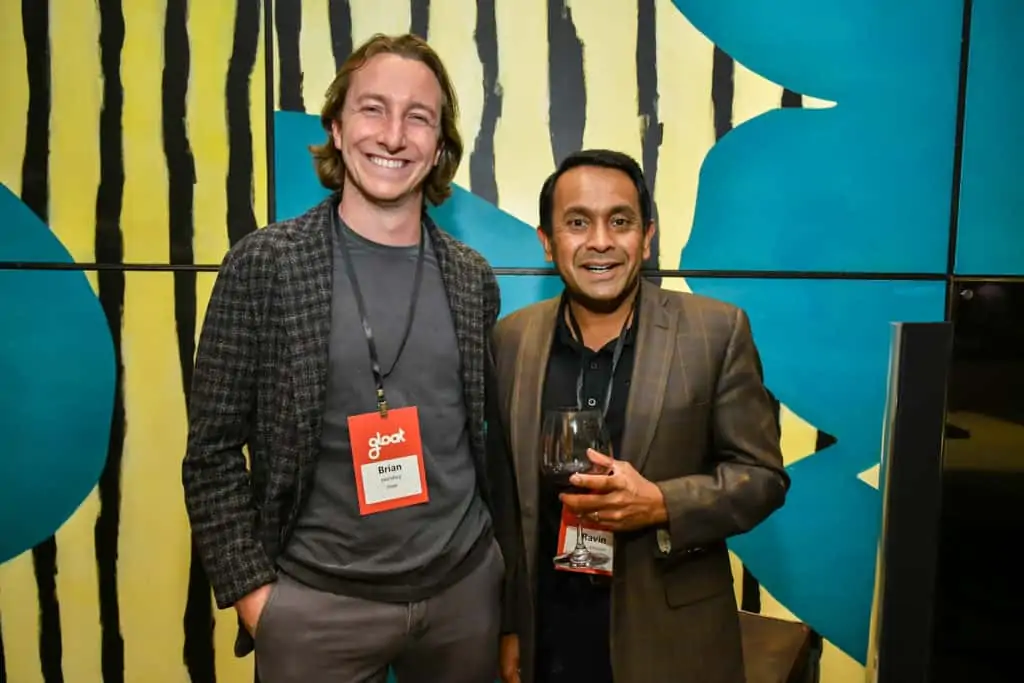Exploring the future of work and skills with Ravin Jesuthasan
Behind-the-scenes insights from HR Technology Conference & Expo

Skills, talent mobility, and AI weren’t just hot topics at the HR Technology Conference & Exposition. They’re also themes that are currently shaping the future of work and redefining our approach to human capital management.
While identifying these trends is a step in the right direction, we’re going to need to take it further and develop an in-depth understanding of them to thrive in our next chapter. We know innovations in HR technology are changing the way we work, but exactly what impact will these developments have? And what can we do now to set our businesses up for success in the future?
As a recognized futurist, author, and global thought leader, Ravin Jesuthasan has spent much of his career answering these questions. We caught up with him at the conference and we’re sharing his insights on how the future of work and skills will continue to evolve in the 21st century.
4 key takeaways from Ravin Jesuthasan on the future of work and skills
While every organization’s path forward will be unique, there are a few overarching lessons that Ravin Jesuthasan shared for leaders who are looking to get ahead in the new world of work.
#1. The frictional cost of work will be reduced
Many businesses have identified agility as one of their top priorities, and plenty of enterprises are recalibrating their strategies accordingly. However, even organizations that are at the forefront of embracing more dynamic approaches still have a ways to go in their workforce agility journeys.
One of the biggest mindset shifts that leaders need to make is changing how they quantify work itself. Traditionally, jobs dictated who is doing what and which capabilities employees should possess. But jobs come with their own confines—namely, rigid hierarchies, slow reaction times, and a failure to capture the full breadth of employee potential.
Jesuthasan believes it’s time to rethink our approach to work. As he explains, “We’ve talked about agile for many years now, but agile has always been hamstrung by the fact that you have work being done in jobs so you have that continuous friction of deploying skills to work that is always there.” Rather than relying on outdated models, Jesuthasan encourages leaders to embrace skills as the new way to measure and quantify work.
#2. It’s time to diversify your talent pools
Diversity, equity, and inclusion are terms that are at the top of leadership’s agenda for the 2020s. Over the past five years, there has been a 71% increase in D&I roles worldwide, and these positions will only continue to become more prevalent in the new world of work.
As businesses build out teams and departments to support more equitable organizations, the way talent allocation and internal mobility are approached needs an inclusivity upgrade. Companies that take a skills-based approach—as opposed to relying on traditional job hierarchies and linear career ladders—will have a major advantage by gaining access to broader talent pools, making it easier to bridge skill gaps and identify talent with niche expertise.
“Now the question is, how do we ensure that we’ve got an opportunity to get as many people into the game as possible?”Jesuthasan says. “That has massive implications for everything that we’ve seen over the last year in terms of diversity, equity, and inclusion because the more inclusive we can make our business models, the greater the impact we’re going to see,” he concludes.
#3. Boomerang experiences are the new gold standard
It’s impossible to talk about the future of work without addressing how today’s burgeoning labor shortage will shape it. Just like the way we measure work needs to change, the employee-employer relationship must evolve to enable a more fluid exchange of talent and skills. As Jesuthasan explains, “Relationships have to be fundamentally reframed because, in the past, they were based on this notion that you had a permanent deal. Everyone who joined the company kept the same pay and benefits until they left.”
In contrast, employees are going to move more freely in the new world of work. Instead of making retention the ultimate goal, leaders should shift their focus towards enhancing their employee value proposition. When workers believe an organization invests in their career development, they’ll continue to support business-wide objectives—even once they’ve moved onto a new role with a different company.
“Going forward, it’s going to be about how do we connect as many people to the mission as seamlessly as possible, recognizing those connections won’t be as permanent as they once were—but that it’s okay, because we’re going to see many more boomerangs,” Jesuthasan says.
#4. Reinvention will become a constant
“We are past the days of waiting for a transformation to occur every 8 or 9 years. We don’t have that luxury anymore,” Jesuthasan says. To illustrate just how quickly the pace of change is accelerating, he points to something Microsoft CEO Satya Nadella said regarding how the pandemic paved the way for rapid innovation: “We’ve seen two years’ worth of digital transformation in two months.”
There are no signs of a slowdown as we approach the new world of work. As a result, leaders are going to encounter a new challenge: designing operating models that are built for flexibility and fluidity, rather than stability. Jesuthasan notes, “The pace and scale of change mean that you have to have the capability to reinvent constantly. But who’s building that capacity? Who owns it? I think that’s where HR has this massive opportunity to drive change.”
With HR leaders at the helm of this transformation, the nature of human capital management is evolving to become a strategic function. And now that responsibilities are transforming, HR can’t rely on the same set of tools that were designed to support administrative duties. So what platforms are going to prove essential in the new world of work?
Jesuthasan leaves us with one final bit of forecasting, explaining, “Most people see the pivot in HR technology from enterprise-wide architecture to best-in-breed technology, and with that, the talent marketplace is really becoming the underlying system of record going forward.”





